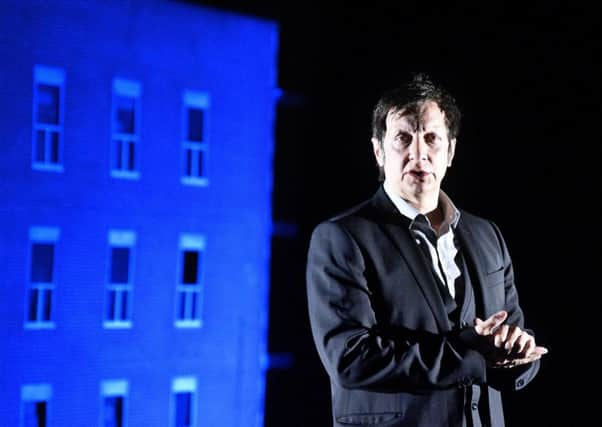Joyce McMillan: Selfie era brings solo show to fore


In the International Festival, McBurney’s show was followed in short order by Robert Lepage’s 887, a beautiful and absorbing solo account of a childhood shaped by the reviving Quebec nationalism of the 1960s, and by Untitled Projects’ Paul Bright’s Memoirs And Confessions Of A Justified Sinner, a bravura solo lecture-performance by actor George Anton.
And meanwhile, out on the Fringe, there were moments when it seemed as though the show with more than one performer was becoming an endangered species. There were plenty of big shows, of course, in the Musicals & Opera section of the programme; also among student companies, and among those based in Edinburgh, who can avoid soaring festival accommodation costs.
Advertisement
Hide AdWhere The Scotsman Fringe First awards operate, though – seeking out high-quality new work brought to the Edinburgh Fringe from all over the world – the solo show dominated the field. In recent years, the proportion of solo shows among our Fringe First award winners has been hovering just below the 50 per cent mark. This year, though, almost two-thirds of our winners were solo performers. Show after show that promised – and often delivered – big drama on big themes turned out to feature only one actor; the Amnesty International Freedom of Expression Award chose an outstanding, Fringe-First-winning solo show – the wonderful A Girl Is A Half-Formed Thing, unforgettably performed by Aoife Duffin – as its winner.
So what is going on here? The obvious answer lies in the high cost of staging a Fringe production in Edinburgh, particularly when cast accommodation costs are taken into account. Theatre-makers have observed the huge success of the Fringe’s leading comedy stars, and have realised that if the quality of the show is high enough, audiences are willing to pay as much to see one performer as they are to see six, or even 20.
There’s no doubt, though, that however brilliant many solo performances are, there’s something wrong with a cost structure that increasingly limits the range of theatre available, particularly where new and more high-risk work is involved; and those who have successfully launched other initiatives to support companies on the Fringe – such as the Made In Scotland initaitive – should perhaps be thinking about how to help ambitious companies bring shows with the full cast size the work demands.
Even if those practical issues were resolved, though, it seems to me that there’s something about the mood of our time that seeks out the solo show, regardless of cost. Indeed the presence of those three huge solo theatre pieces on the Edinburgh International Festival programme, where resources are relatively plentiful, shows that the decision to perform alone is not only a practical one, but one that reflects a profound shift in the aesthetic of 21st century theatre.
It’s perhaps partly a question of theatre carving out a distinctive “live” role, in an age when multi-character drama is increasingly defined by television and film; audiences seem to have an increasingly low tolerance for live theatre in which no-one speaks to them directly, as solo performers always do.
In the end, though, I think there’s also a shift that goes even deeper than that. And I suspect that even if a special stream of funding to support larger casts appeared tomorrow, many writers and producers would still choose the solo show; because at some level, this is the voice of our time, the theatre of the age of the “selfie” – telling stories, playing with perceptions, and dismantling and reassembling the self, as it’s reflected back to us not only by other people, but also by the live electronic screens, large and small, that increasingly dominate our lives.